Surprising Stories: Empress Eugénie & Rosa Bonheur
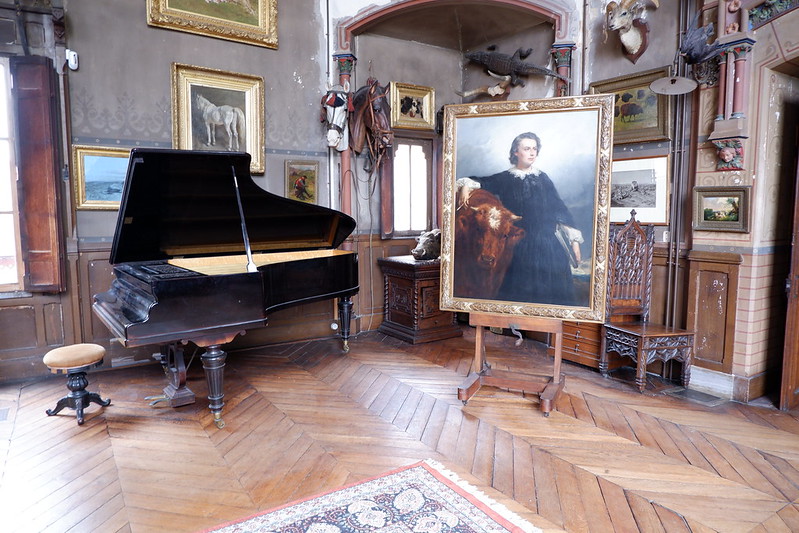
Rosa Bonheur’s Studio & Home
Today’s visitors to Paris associate the name Rosa Bonheur with the trendy guinguettes (causal bars) located at picturesque venues in the city. Less well known is the fact that Rosa Bonheur (1822-1889) was one of the most successful animal painters of the nineteenth century, whose career is currently being commemorated at a bicentenary exhibition at the Musée d’Orsay from October 2022 until January 2023. One of the most important moments of Rosa Bonheur’s lifetime occurred in June 1864, when Empress Eugénie made a surprise visit to the artist’s studio, and one year later awarded the painter with the Legion of Honneur. Rosa Bonheur became first female artist to receive such recognition: why did the Empress take such an interest in this non-urbane, eccentric, animal painter?

L’impératrice Eugénie visit to Rosa Bonheur in Thomery. Deroy Auguste Victor (1825-1906), Lix Frédéric Théodore (1830-1897)
Bonheur was born on 16 March 1822 in Bordeaux, the oldest child in a family of artists. Her father was a landscape and portrait painter who encouraged his daughter’s artistic talents. From a young age, she made studies of domesticated animals, including horses, sheep, cows, goats and rabbits that she studied visiting the suburbs of Paris, such as the then yet-to-be developed Bois de Boulogne. She also studied animal anatomy at the National Veterinary Institute petitioning the police to allow her to wear trousers (at that time forbidden for women) when sketching.
Bonheur’s first major success occurred during the tumultuous period following the Revolution of 1848, when her Ploughing in the Nivernais, a depiction of massive cows in landscape was awarded a gold medal in 1849. Her most famous work, the monumental The Horse Fair, which measures eight feet high by sixteen feet wide, was completed in 1855, the same year as Napoleon III’s Universal Exhibition. The painting depicts the horse market on the tree-lined Boulevard de l’Hôpital .
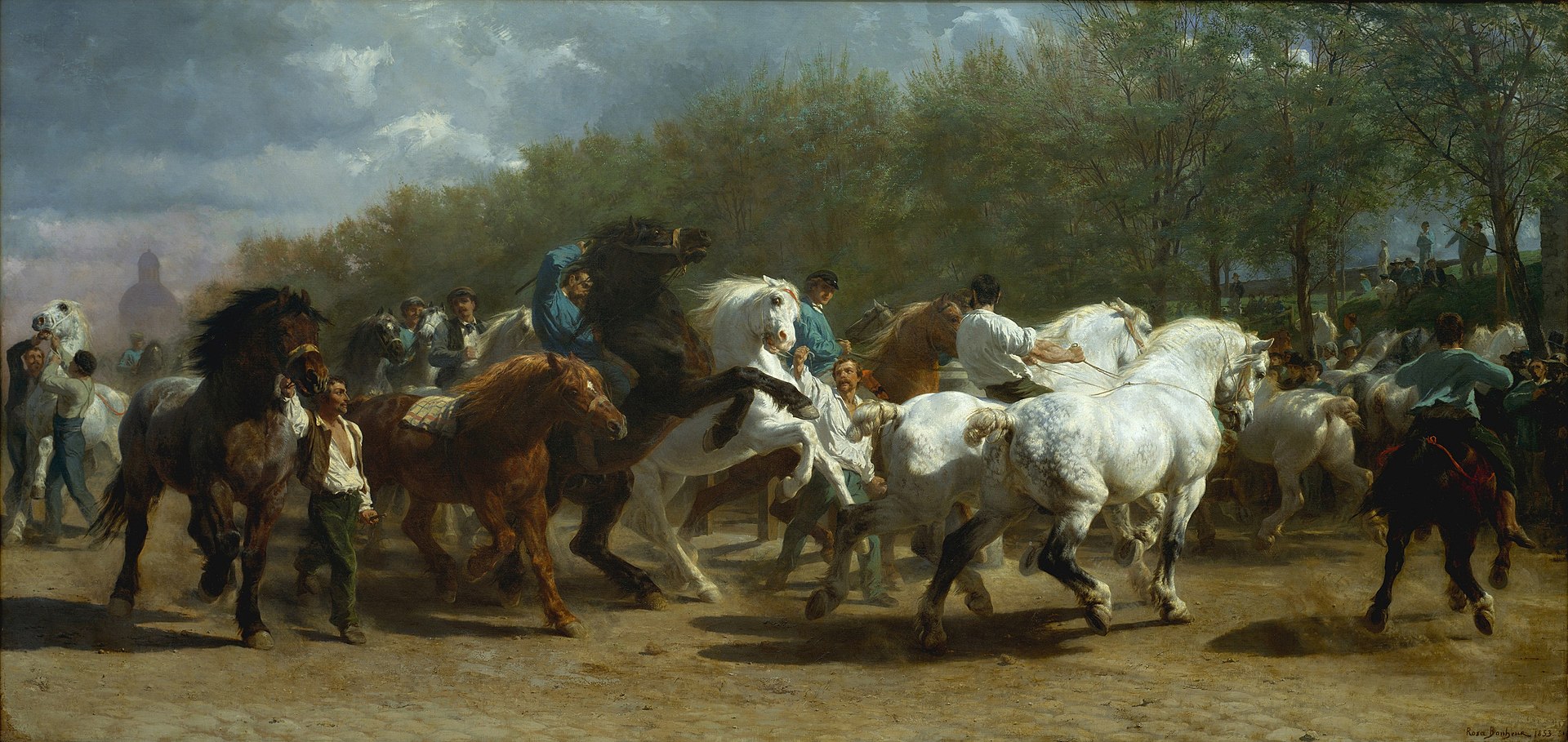
Le Marché aux chevaux (1853), Rosa Bonheur, Metropolitan Museum of Art, New York.
When Eugénie became Empress of France in 1853, Bonheur’s fame was on the rise. Eugénie, a legendary beauty and accomplished sportswoman, fluent in French, Spanish and English, was an avid arts patron. Eugénie’s art collecting focused on historical subjects following the tenets promoted by the storied arts school, the École des Beaux Arts. She acquired works from the official exhibitions in Paris, notably religious subjects. Advised by her long-time confident, the author Prosper Merimée (1803-1870), Eugénie decided to visit Rosa Bonheur while she was in residence at château de Fontainebleau in 1864.
According to both Merimée and the artists’ own account of the meeting, the Empress interrupted the artist while she was working on a landscape painting with deer. Eugénie’s decision to honor a woman who had succeeded on her own terms clearly appealed to the Empress. Eugénie actively supported young women’s right to public education, to compete for the baccalaureate diploma, and to attend medical school. When she bestowed the Legion d’Honneur on the artist the Empress is believed to have said: “Genius has no sex.”
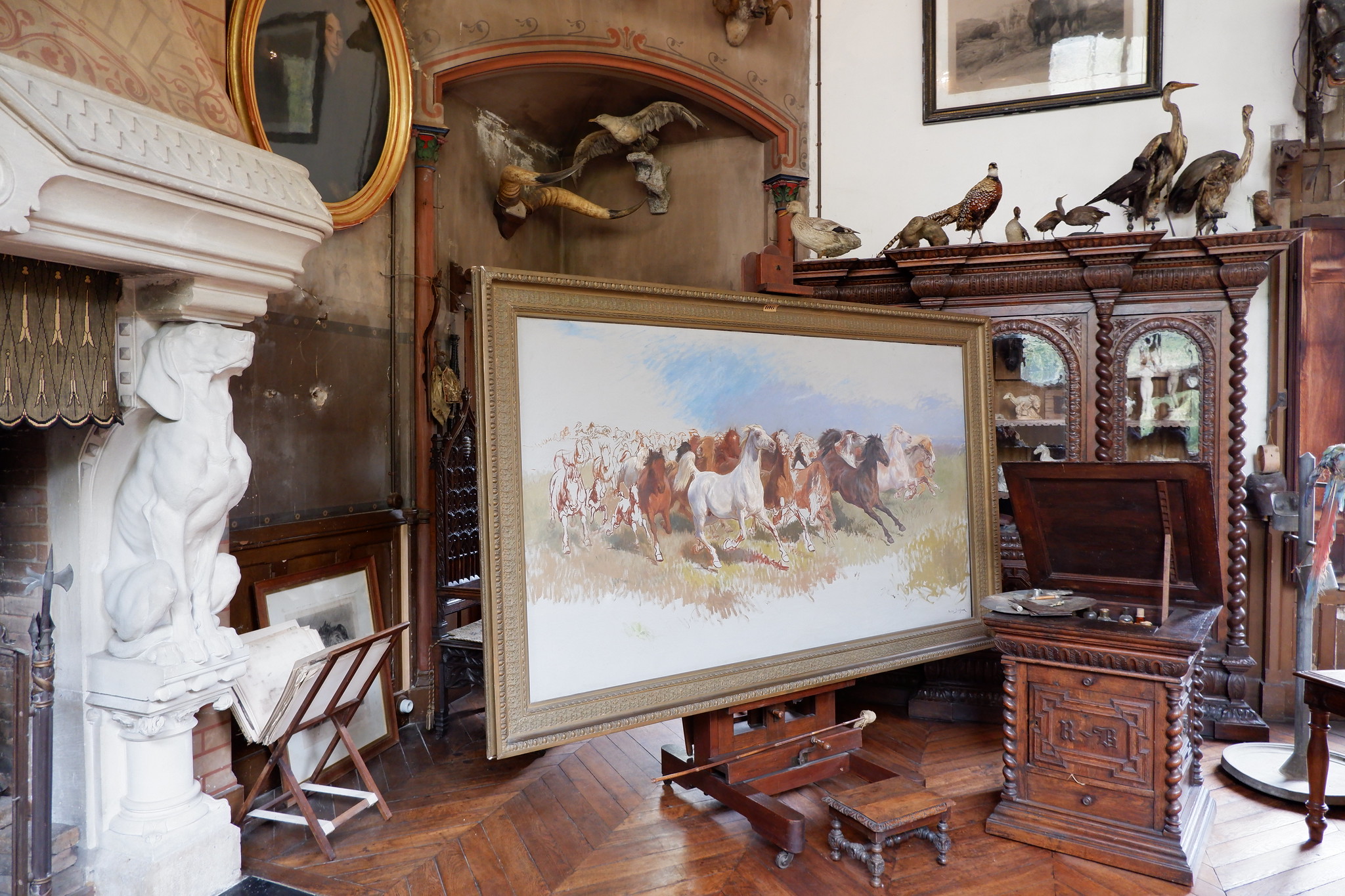
Rosa Bonheur’s Studio & Home
While what we would recognize today as shared feminist concerns may have brought Bonheur to Eugénie’s attention, we can also speculate that during their meeting, the women shared a conversation about animals, another subject dear to both of them. In 1852, Napoleon III decided to transform the Bois to Boulogne into a public park. Bonheur had sketched there in her youth. During her studies at the Veterinary school she befriended the father-and-son Étienne Geoffroy Saint-Hilaire and Isidore Geoffroy Saint-Hilaire, comparative anatomists and zoologists, who, as members of la Société impériale zoologique d’acclimatation, founded the Jardin d’Acclimatation to welcome exotic animals to France in 1854. In 1869, the society entrusted the project to open a zoo to the architect Gabriel Davioud and the landscape architect Jean-Pierre Barillet Deschamps. Napoleon III officially opened the zoo to the public in 1860.
Eugénie was one of the founding patrons and members of the board for the project. The Empress was dedicated to protecting and studying animals. By 1866, the zoo had over 110,000 species, a constant inspiration to Bonheur who painted animals housed there for another 20 years. She owned a lion as a pet but eventually gave it to the zoo. Considering women at the nexus of this acclimatation project suggests that they were promoting women as advocates of science, education, and animal rights, causes that are still topical for men and women today.
Would you like to visit the Rosa Bonheur exhibit with a tour of the collections at the Orsay or her studio outside Paris? Reach out to us here to create the perfect itinerary for you.
For more fascinating and lesser-known anecdotes of French history see the other articles in our Surprising Stories series.



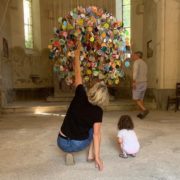
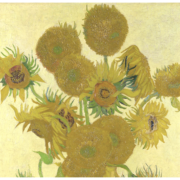
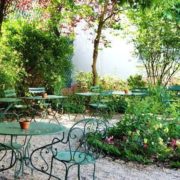
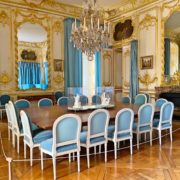



Leave a Reply
Want to join the discussion?Feel free to contribute!